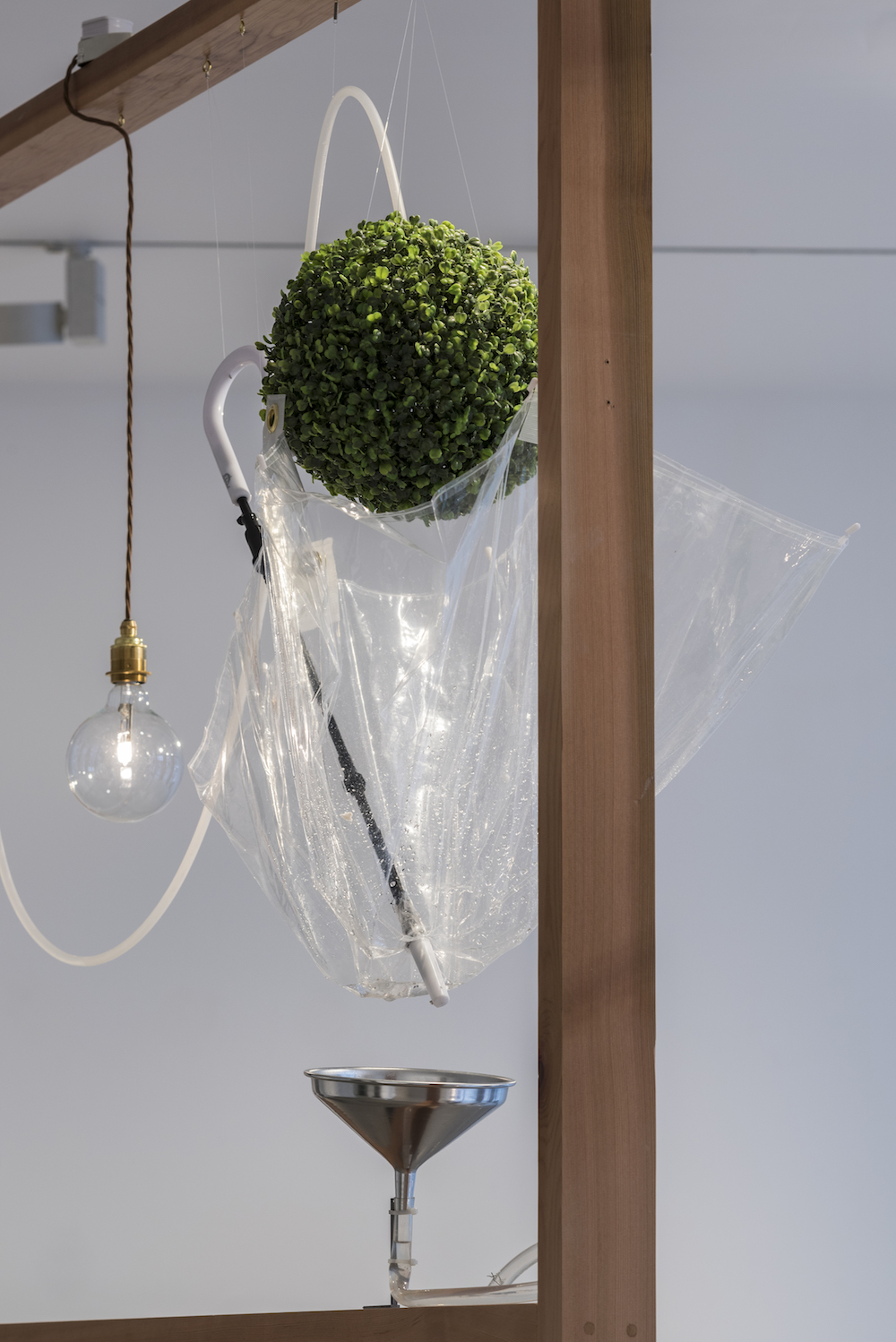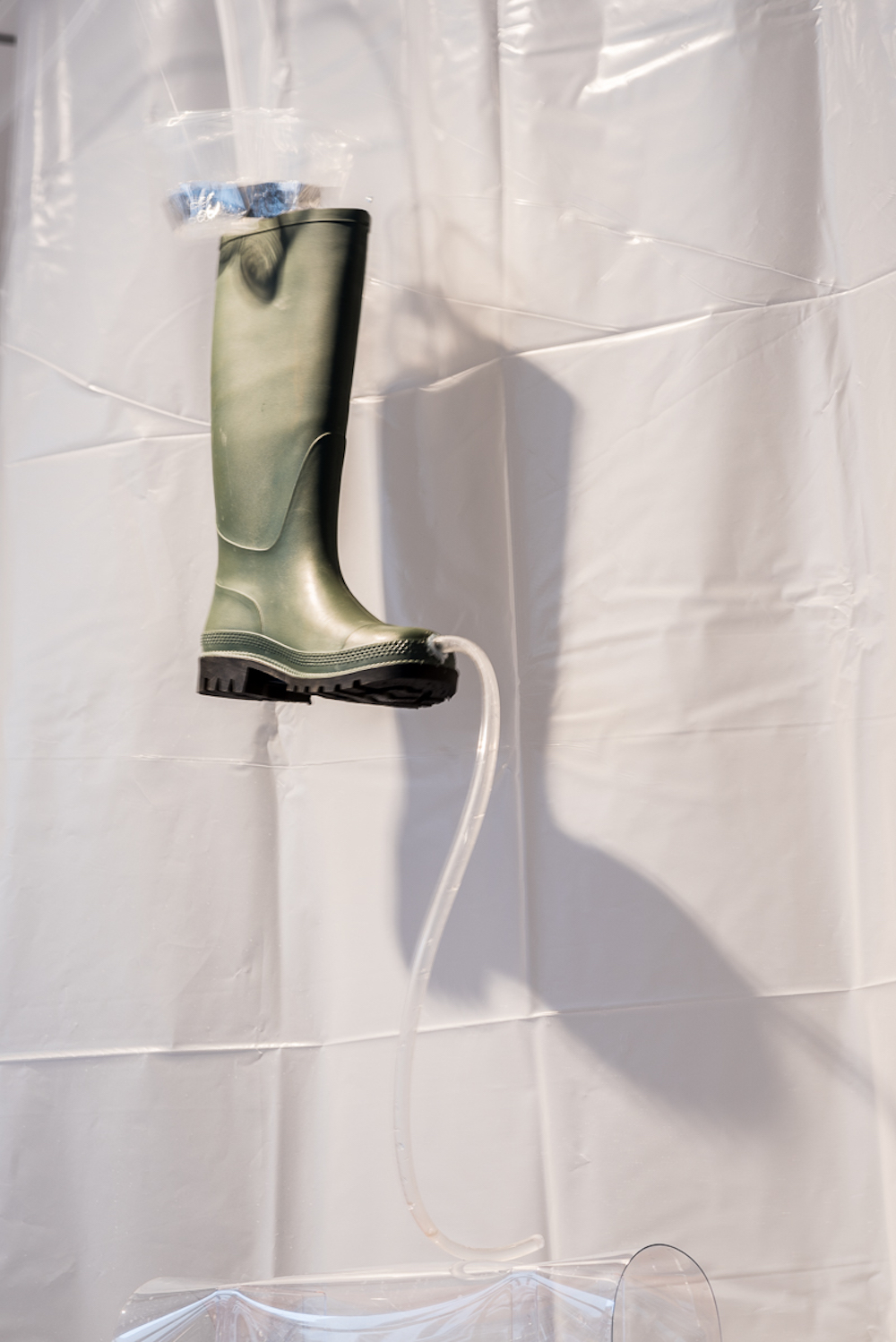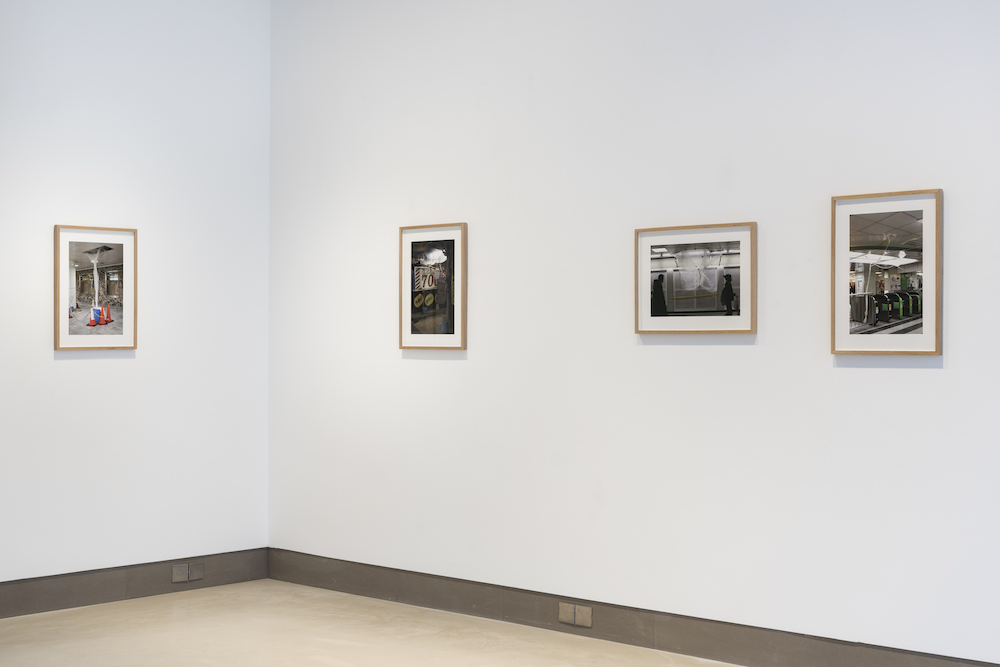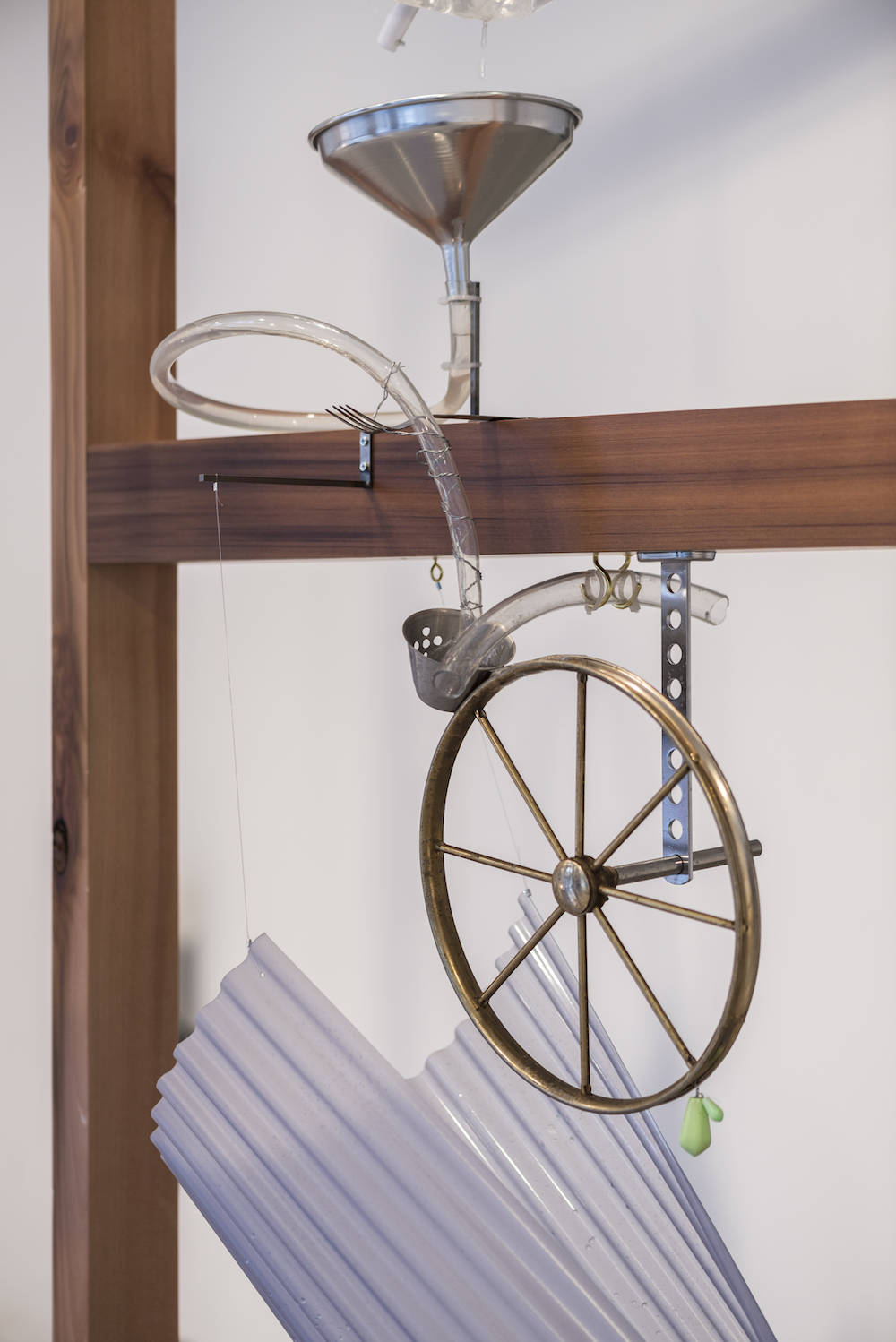
Can you tell me a bit about Moré moré tokyo [leaky Tokyo], which opened last week at White Rainbow gallery in London?
This project started from a photography work. I was shooting the various stations in Tokyo where station agents attempt to fix water leaks with plastic items like sheets, hoses, bottles etc. It is a fieldwork series that started in 2009 where I discovered and captured the leaking venues that keep appearing and disappearing. They look like an installation to me. I realized humans have strong creativity when faced with an emergency situation.
In 2011 the Fukushima disaster happened, and I started to think about how to develop this fieldwork as an installation. In this exhibition, I first installed frames and leaky situations then tried to fix them with objects that I collected in London.
The Tokyo Metro has quite defined cultural connotations―even those who have never visited will have some idea of it. How would you describe your history and relationship with it?
Of course I saw so many historical details during my fieldwork. But I am much more interested in the way they appear and disappear all the time because of deformation through the constantly changing level of ground water. I found there to be something very organic in this process. I came to see how the relationship between the natural and man-made world is constantly changing.
The show brings some of the background work, photography and research, together with your installations. Do you feel it’s important to have these elements shown alongside one another, and how does it change (if at all) your approach to showing the installations?
Yes, It’s very important showing the photographs this time because they are an inspiration. Another important thing for this project is improvisation. This solo show is a development from the one I did for the Nissan Art Award. I’m so excited about making installations with objects found in London. This project does not have a design sketch, it’s improvised architecture. I believe it will be a new phenomenon.
How have your residences at the V&A and Camden Arts Centre, and more widely, London itself, influenced your practice?
These great opportunities make new ideas for me. It’s more comfortable to make site specific work for a solo show having had a chance to see the atmosphere of London beforehand–the people, buildings, infrastructure and so on. I believe this research affects the new installation at White Rainbow.
What else do you have coming up this year?
This month, as well as my exhibition at White Rainbow, I also open a show at the MOT (Museum of Contemporary Art, Tokyo) called Spring 2017: by the Deep Rivers. In March I will be participating in Hong Kong Art Basel and in August at the Sapporo International Art Festival 2017 in Japan. I also have work showing at the Kochi Muziris Biennale through March.
‘Moré moré tokyo [leaky Tokyo]’ is showing at White Rainbow, London until 11 March. All images: Yuko Mohri, Moré moré tokyo [leaky Tokyo]. Courtesy the artist and White Rainbow, London. Photo: Damian Griffiths






